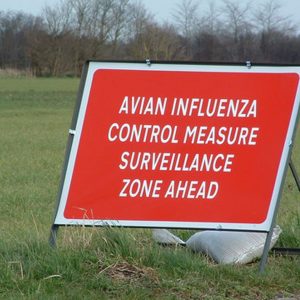Bird Flu Epidemic Fatal in China
The recent global bird flu outbreaks have resulted in at least 460 confirmed human cases of the H7N9 strain in China since October 2016. On average, a third of those diagnosed with H7N9 die of their infections, according to the WHO. Between 1 January 2017 and 12 February 2017, there have been 87 deaths confirmed H7N9 deaths, all in China. This has been the latest in a series of yearly epidemics since 2013, but the largest outbreak in humans so far. Human infections result from direct contact with birds. Person to person transmission has not occurred yet, though the possibility is a concern among global health experts. There have been reports of cases in Vietnam as well.

Usually there are only two or three bird flu strains at any one time, this year there are at least half a dozen. It typically spreads through direct contact with a bird, but this year there appears to be “aerosol transmission from one infected barn to another, in some cases many miles away” according to infectious disease specialist, Michel Osterholm. The H5N9 virus in China has split into two different lineages, making vaccine production, already a time consuming process, more difficult; manufacturers plan to make enough to vaccinate 20 million people this summer. Some iterations of the virus appear to carry genetic markers associated with drug resistance to anti-viral treatments.
Nearly 40 countries in Europe, Asia, and Africa had reported outbreaks of strains of the bird flu at the end of January. Even countries as isolated as Iceland are taking precautions, worried the virus will spread with migrating birds. France and Hungary have been the hardest hit by the outbreak of H5N8 this year, with more than 3 million birds having died or been culled in the Southwest of France so far, and similar numbers in Hungary.
There have been four outbreaks of the bird flu in North America, in 2002, 2003, 2004, and 2016, including 5 confirmed cases of human infection, all of whom recovered. Experts worry about America’s ability to respond to a coming epidemic as President Trump has yet to name a new head of the Centers of Disease Control and Prevention, an Assistant Secretary for Preparedness and Response, or head USAID the three agencies that respond to pandemics. He has also cut global health funding, which helps contain epidemics abroad and prevent them from spreading to America.
Sources and Further Reading
Surge in human cases of deadly bird flu is prompting alarm – The Washington Post
The raging bird flu in China is a good reminder the US isn’t prepared for a pandemic – Vox
Bird Flu Likely to be Brought to Iceland – Iceland Review
France detects possible bird flu outbreak on northern farm – Reuters
Proliferation of Bird Flu Outbreaks Raises Risk of Human Pandemic – Scientific American
Outbreaks of Avian Influenza in North America – CDC
A Lethal Bird Flu Returns to China – Council on Foreign Relations
Epidemioloical and virological differences in human clustered and sporadic infections with avian influenza A H7N9 – International Journal of Infectious Diseases
Data, disease and diplomacy: GISAID’s innovative contribution to global health – Global Challenges
Global task force for influenza – Nature
